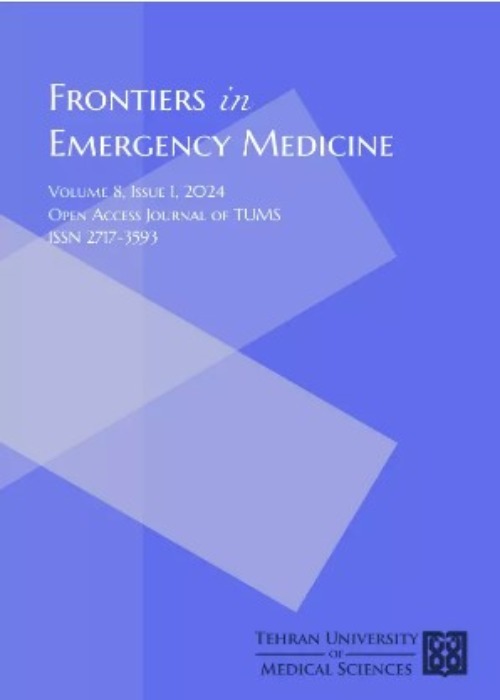Prophylactic Recommendation for Healthcare Workers in COVID-19 Pandemic
During COVID-19 pandemic, it seems that healthcare workers (HWs) are more prone to the infection than general population. Indeed, a high viral load atmosphere and infected medical equipment are sources for spreading the disease. Many HWs should care for patients in the intensive care units (ICUs) which are one of the most contaminated areas. However, despite the adequate protections, HWs are still exposed to the coronavirus. Moreover, some procedures such as tracheal intubation increase the risk of infection. Overall, the probability of contamination in HWs is three times more than that of other people. According to Keshavan et al., about 3300 Chinese HWs have been infected by COVID-19, with a mortality rate of 0.4%. In Iran, we have a large number of affected HWs, with 69 registered deaths until late March 2020. Most of them were young with no previous medical history. So we have to improve protection and plan additional arrangements against COVID-19.There are several mechanisms for the antiviral activity of hydroxychloroquine. This drug is a weak base that concentrates on the intracellular sections including endosome and lysosome; so, viral replication in the phase of fusion and uncoating will be stopped. Also,hydroxychloroquine can change the ACE2 glycosylation and inhibits both S-protein binding and phagocytosis. The last mechanism would be the suppressing effect on cytokine production and the immunomodulatory effect of the drug. Based on in-vitro studies of chloroquine on SARS-CoV-1, its effective role as a prophylactic agent and a post-infection treatment has been raised. According to another cell-culture study, the preventive effect of the drug is estimated to be 24 hours before and 5 hours after the contamination. The weekly dose of 500 mg chloroquine, which is used for malaria prophylaxis, will result in a concentration below the EC50, which is not enough for inhibition of the novel coronavirus. But the minimum dosage, which is used for rheumatoid arthritis treatment (250mg daily) will result in plasma concentrations higher than EC50, which may be sufficient in this regard. Regarding this pharmacokinetics and in-vitro investigations a double-blind, randomized, placebo-controlled trial using chloroquine as a prophylactic agent for SARS-CoV-2 infection is ongoing. The recommended dose is a loading dose of 10 mg/kg from base drug followed by 150 mg daily (250 mg chloroquine phosphate salt). Subsequently, the number of infected patients will be assessed after 3 months. Another running clinical trial is a phase III triple blinded one employing hydroxychloroquine with 200mg daily dose for 60 days and the outcome as well as the rate of symptomatic infected patients will be evaluated. There is also another ongoing study on hydroxychloroquine as a COVID-19 post-exposure prophylactic agent prescribed within 3 days of either a HWs or household contact. The recommended dose is 800mg once, followed by 600 mg during 6 to 8 hours, then 600mg once a day for 4 consecutive days. Finally, the rate and severity of COVID-19 infections are compared. The study could probably show that 200-400mg of hydroxychloroquine per day is a reasonable prophylactic regimen for the exposed HWs.To be more precise, our experience on the rheumatologic patients who tool 200 mg per day hydroxychloroquine, as well as the medical workers who received the same dose for prophylaxis against the novel coronavirus showed that hydroxychloroquine with a 200 mg/day dose can have a relative prophylactic effect on COVID-19. According to our data, the few cases who received 200mg of hydroxychloroquine per day, showed mild to moderate symptoms with no severe manifestations. However, the prophylactic dose of 400mg per day may be accompanied by some drug interactions and adverse effects in the long term; so 200mg of hydroxychloroquine is a rational prophylactic dose for practitioners who are exposed to the high viral load environment.
- حق عضویت دریافتی صرف حمایت از نشریات عضو و نگهداری، تکمیل و توسعه مگیران میشود.
- پرداخت حق اشتراک و دانلود مقالات اجازه بازنشر آن در سایر رسانههای چاپی و دیجیتال را به کاربر نمیدهد.


